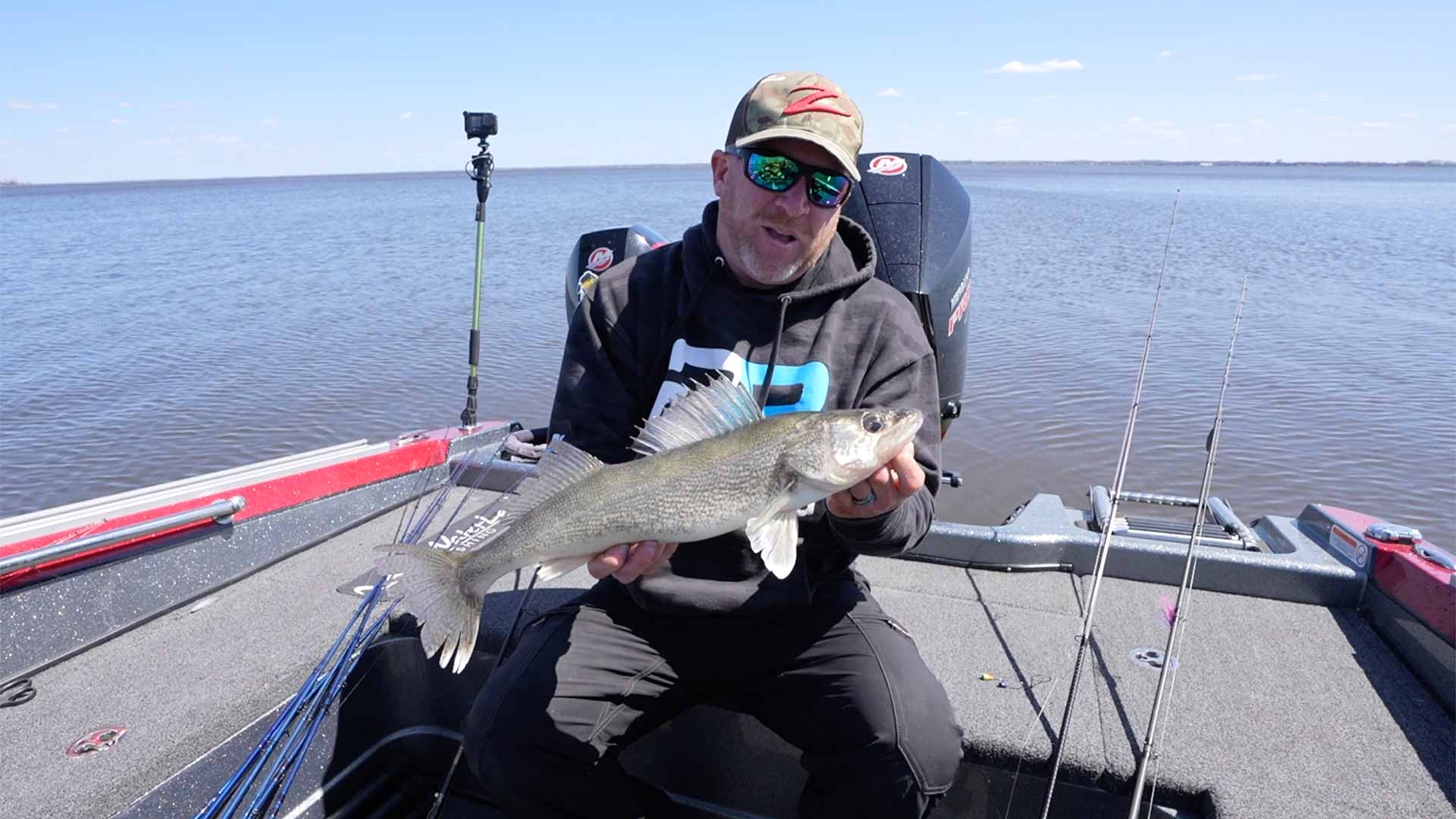Pike on the Rocks
Big pike often move to deep, cool water in summer, periodically making shallow feeding forays onto windswept rock structures meeting the main basin. Cast or troll large crankbaits or jigs for summer success.
Pike fishing can be an exhilarating experience. These aggressive predators spend a lot of time on the hunt, often returning to locations where they’ve successfully fed in the past. Anglers, too, go through a similar process in their pursuit of pike. They cover water quickly until their paths intersect with these formidable fish.
In this article, we’ll explore some effective tactics for targeting pike, particularly when fishing around rocky structures. We’ll discuss the use of swimbaits and crankbaits, as well as the advantages of both casting and trolling techniques. So let’s dive in and discover how to catch these incredible fish!
Covering Water with Swimbaits and Crankbaits
When it comes to pike fishing, covering water is key. There’s often a vast expanse of water to explore, and it’s important to efficiently search for active fish. One effective approach is to use swimbaits and crankbaits that can be cast and retrieved quickly.
The Storm Swim Shad and the Clackin’ Rap are two popular baits for targeting pike. These lures are loud and flashy, making them highly effective in attracting the attention of these aggressive predators. The swimbait can be cast up onto shallow rock piles and retrieved quickly, while the Clackin’ Rap can be used to cover a wide range of the water column.
Pike are known for their mobility in the water. When they are active, they can move up shallow on reef systems, and when they are inactive, they can drop down to depths of 30 to 40 feet. This means that anglers need to be adaptable and cover both vertical and horizontal areas when targeting pike.
Fishing Gear and Techniques
When fishing for pike, it’s important to have the right gear and techniques. Using a heavy-duty rod and reel combo, such as the Quantum Flip and Stick with an Energy rod, can provide the strength needed to handle these powerful fish. Pairing it with a 40-pound Suffix 832 line and a 30-pound titanium leader, tied with an Albright knot, ensures that the bait has plenty of action without sacrificing strength.
The use of titanium leaders is particularly advantageous when fishing with wobbling baits like swimbaits and crankbaits. Heavy wire or fluorocarbon leaders can impede the action of the bait, but the flexibility of titanium allows for maximum movement. Additionally, the tile titanium leader can be reeled right through the rod guides, making it easy to cast and retrieve without any interference.
Casting vs. Trolling
When targeting pike, anglers have the option to use both casting and trolling techniques. Each approach has its advantages and disadvantages, depending on the size of the area being fished.
Casting is preferred for smaller, high-percentage spots like small islands, small reefs, and the tips of points where pike are likely to be concentrated. It allows angl ers to keep their lure in a high percentage target area and adjust the depth of their retrieve to fine-tune their presentation. If successful, anglers can replicate the pattern by moving down the lake and targeting areas with similar characteristics.
On the other hand, trolling is more efficient for covering larger areas, such as expansive flats, large reefs, or lengthy shorelines. Trolling allows anglers to present their lure at a consistent depth for an extended period of time, increasing the chances of encountering packs of roving pike. It’s like one long, never-ending cast that maximizes the chances of attracting fish.
Finding the Perfect Pattern
To have a successful pike fishing trip, it’s important to find the perfect pattern where both predators and lures collide. This requires experimentation with both casting and trolling techniques until a successful pattern emerges.
By exploring both casting and trolling, anglers can determine which approach works best for the specific conditions and the behavior of the pike. It’s important to pay attention to the structure of the area being fished, the depth at which the pike are holding, and the speed and motion of the retrieve. Once a successful pattern is established, anglers can replicate it to catch more pike throughout their fishing trip.
Conclusion
Pike fishing is an exciting and rewarding experience. By covering water efficiently with swimbaits and crankbaits, anglers can increase their chances of encountering these aggressive predators. Whether using casting or trolling techniques, it’s important to adapt to the behavior of the pike and find the perfect pattern that leads to success.
So, if you’re planning a pike fishing trip, make sure to equip yourself with the right gear, such as a heavy-duty rod and reel combo and a titanium leader. Experiment with both casting and trolling techniques to find the most effective approach for the conditions you’re fishing in. And most importantly, enjoy the thrill of catching these incredible fish!










